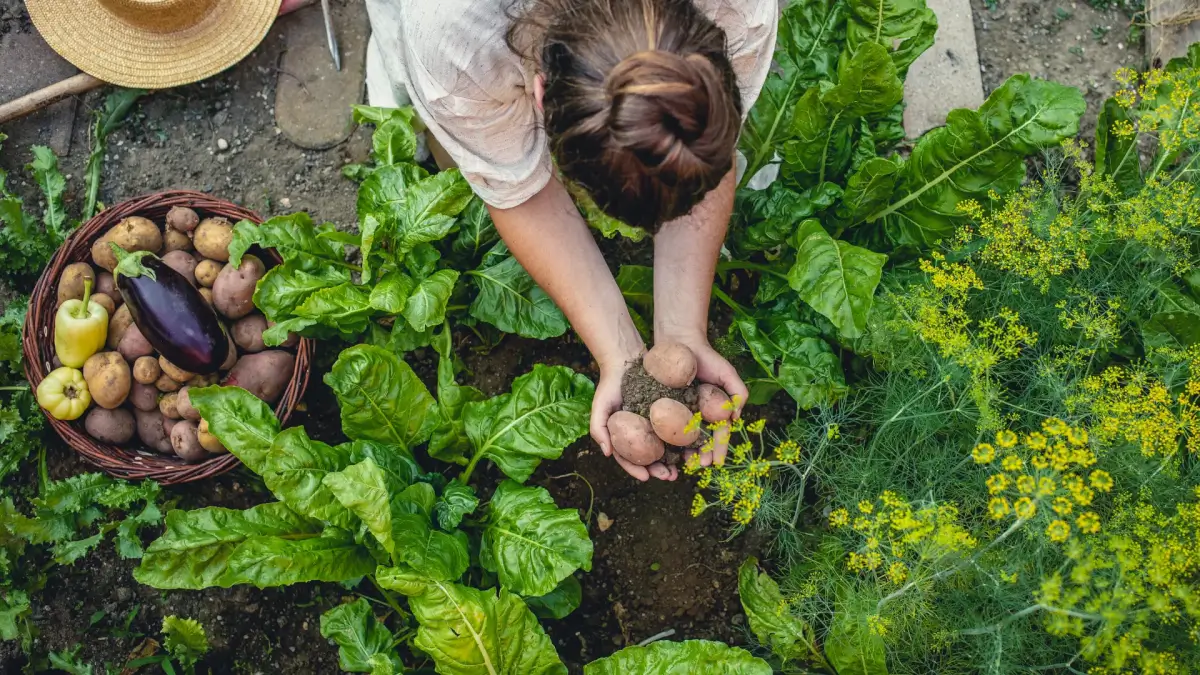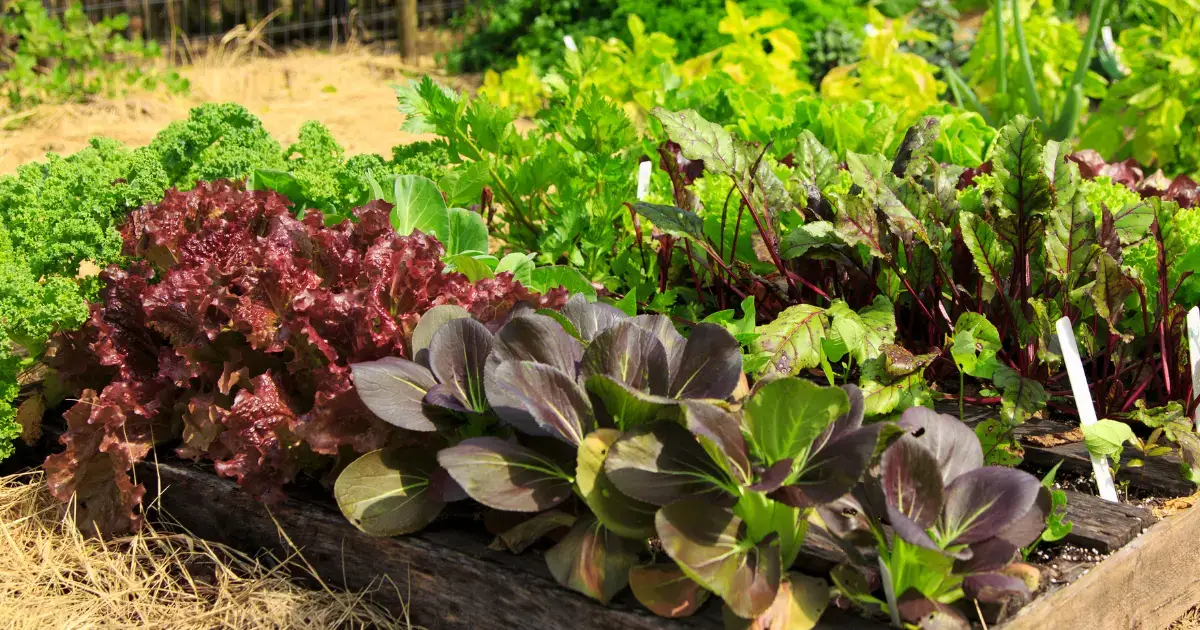
Disclosure: Some of the links below are affiliate links. If you click through and make a purchase, we receive a small commission. This allows us to continue to deliver valuable, free content to North Texas gardeners. Thank you for your support!
One of the easiest herbs to grow, lemon verbena is a beautiful and useful addition to the North Texas garden. In fact, it’s so easy to grow that for years I harvested more lemon verbena than I knew what to do with. Thankfully, I love research.
After several years of growing, experimenting, and pouring through herbal literature, I developed this comprehensive guide to cultivating lemon verbena for a multitude of home and kitchen projects.

The Lemon Verbena Plant
Lemon Verbena (Aloysia tripyhilla* and sometimes known as verveine) is a deciduous shrub with a graceful growth habit and a strong, clean lemon scent. Pest-resistant, disease-resistant, and heat-tolerant, lemon verbena is grown in containers in North Texas and requires very little maintenance.
Pale green in color with long slender leaves, lemon verbena can produce tiny white flowers, but blooms are more likely to form in temperate climates like Florida where grown as a perennial.
Lemon verbena is often touted for medicinal use as a digestive, antioxidant and anti-spasmodic, but there is little scientific evidence available to support these claims and there have been no human trials conducted.
You can propagate lemon verbena by tender stem cuttings in spring and early summer.
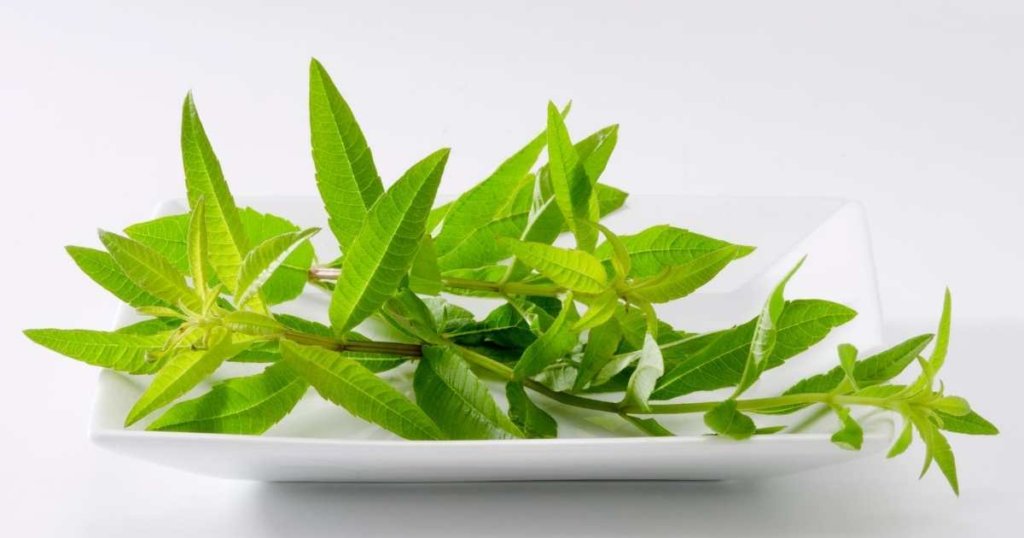
How to Grow Lemon Verbena At Home
Lemon Verbena transplants can be found at quality garden centers in the spring. Here’s how to grow at home:
- Plant your lemon verbena transplant into a pot that is just slightly larger than the transplant root ball, and fill pot with quality potting soil.
- Place the container in full sun. Keep well-watered through the summer, but avoid over-fertilizer application in the spring and again after cutting back or harvesting. Avoid fertilizing in late fall and winter.
- Lemon Verbena can remain outside through the winter in North Texas as long as temperatures are above freezing. If the temperature drops below freezing, bring your lemon verbena plant indoors or protect container with frost cloth.
- As temperature and day-length decreases in the fall, lemon verbena plants will lose their leaves. You may cut the plant back if the woody stems look unsightly, but I like to wait until spring to cut the plant back and stimulate new growth.
How To Harvest Lemon Verbena
Lemon Verbena can be harvested as needed or harvested at all once in mid-summer when it is bushy and full of lush growth.
Harvest the herb by snipping off branches in the morning when oils are most concentrated (versus removing individual leaves) like you would for thyme or rosemary. Even if not harvesting for use, plants will appreciate being cut back by at least half during the growing season to maintain shape.
Dry Lemon Verbena or Use Fresh
Lemon Verbena can be used fresh or dried. There are a number of ways to dry fresh herbs.
Here are a few ways to dry lemon verbena:
- Tie in a bundle and hang upside down until fully dry.
- Leave uncovered in the refrigerator until fully dry.
- Microwave for 1-3 minutes until leaves are brittle and fully dried.
- Leave for several hours in a low oven until fully dehydrated.
By far, my favorite method for drying lemon verbena is the microwave trick. This way, I can harvest and dry my lemon verbena on the same day. No more waiting around for days or weeks to use the dried leaves in recipes or projects.
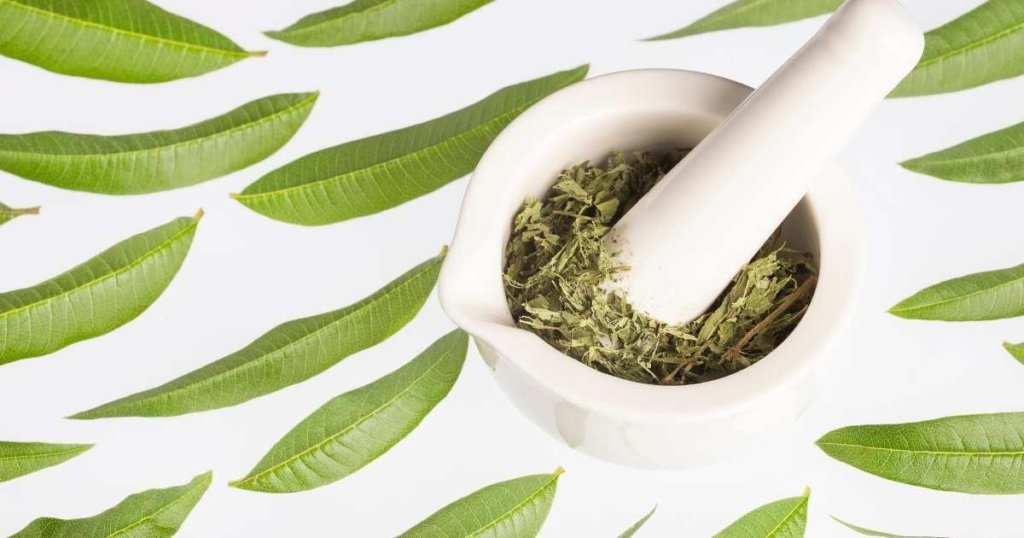
Train Lemon Verbena Into A Topiary “Standard”
Because of its woody stem, lemon verbena can be trained into a “Standard”, if desired.
A standard is a plant trained to a single trunk with a distinct shape created by its leaves and flowers at the top. You have likely seen tropical hibiscus standards for sale.
Instructions:
- Prune your lemon verbena to a single, straight stem.
- Once growth on top becomes lush and the plant has grown to about 30″ tall, cut the growing tip to direct energy into side branches.
- Rotate the container every few days so that the plant grows evenly in all directions. The plant will likely need to be staked.
- After several seasons of growth, your lemon verbena plant will resemble a small tree.
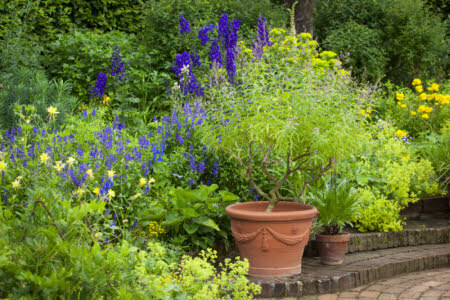
15 Ways To Use Lemon Verbena
1. Substitute for Lemons
Out of lemons? Need a lemony bite in your dish? Add chopped fresh lemon verbena leaves. Fresh leaves are also especially useful in salad dressings, marinades, and herb pastes.
Even better, try adding a tablespoon of chopped fresh lemon verbena leaves to a fruit salad.
2. Lemon Verbena Jelly
Ingredients:
- 2 cups water
- 1 cup fresh verbena leaves
- 2 tablespoons gelatin
- 2 cups unsweetened apple juice
- 2 tablespoons honey
Instructions:
- Bring the water to a boil. Pour over verbena leaves, and steep for 15 minutes. Strain.
- Add gelatin to a mixing bowl. Add just enough warm water for the gelatin to dissolve then add remaining ingredients. Whisk together.
- Pour into jars, and refrigerate until set.
Lemon verbena jelly is delicious on muffins, biscuits, and scones.
3. Lemon Verbena Ice Cream
My Cuisinart Ice Cream Maker takes all the work out of making gourmet ice creams at home to share with family, friends, and neighbors. (These ice cream containers make sharing easy, too.)
Ingredients:
- 2 cups whole milk
- 1 cup heavy cream
- 1 cup packed fresh lemon verbena leaves, plus 1 fresh individual leaf
- 1/8 tsp salt
- 2 large eggs
- 3/4 cup sugar
Instructions:
- In a saucepan set over medium-low heat, bring milk, cream, lemon verbena leaves, and salt to a simmer. Remove from heat, cover, and let steep for 30 minutes.
- In a large bowl, whisk eggs and sugar together until combined. Set a mesh strainer over the bowl and pour the lemon verbena mixture through the sieve into the bowl, pressing the leaves to extract as much liquid as possible. Whisk the resulting mixture to combine.
- Return mixture to saucepan and cook over medium heat, stirring constantly until custard begins to thicken and registers 175°F on an instant-read thermometer. (Do not let boil.)
- Strain into a bowl to catch any large solids. Allow custard to cool on the counter, stirring occasionally, about 30 minutes. Next, cover and put in refrigerator to chill for at least 2 hours.
- Freeze custard in ice cream maker. Chop the remaining lemon verbena leaf, and stir into ice cream when freezing in the maker is complete. Transfer to an airtight container. Put in freezer to harden, at least 1 hour.
4. Lemon Verbena Soap
Making homemade soap is a wonderful way to use up a bounty of herbs. But remember: when using herbs in soap they must be fully dry or else bacteria and mold can grow.
To make Lemon Verbena Soap:
- Use a “melt and pour” soap base. (This is the easiest and safest way to make soap that doesn’t require using lye.)
- Melt the soap until fully liquid. You can do this in a double-boiler on the stove, or in the microwave in 30-second intervals.
- Add 1/2 tsp – 1 tsp dried, crushed lemon verbena leaves to the soap, and stir to combine.
- Dried botanicals alone won’t typically impart a lot of scent to bath or candle products. If you would like a more heavily scented soap, add a lemon verbena fragrance oil to the percentage indicated on your soap by the manufacturer.
- Pour melted soap into molds, and allow to fully cool.
5. Lemon Verbena Sugar
Process two parts fresh lemon verbena and one part sugar in a food processor until the oils are extracted and the mixture is well-blended. This sugar can be stored in the freezer for use throughout the year.
Swap this sugar into all sorts of baked goods for a subtle lemony, floral flavor.
6. Lemon Verbena Sorbet
This recipe is adapted from The Herbfarm Cookbook, by Jerry Traunfeld.
Ingredients:
- 1 cup fresh lemon verbena leaves
- 1 cup superfine sugar
- 1/4 cup fresh lemon juice
- 3 cups cold water
Instructions:
Using a food processor, blend lemon verbena leaves and sugar together until it makes a paste. Add the lemon juice and process for 15 seconds longer, and then add the water. Strain mixture through a fine sieve. Freeze in an ice cream maker.
7. Lemon Verbena Simple Syrup
Combine one part sugar, one part water, and two parts packed, fresh lemon verbena leaves in a sauce pan. Heat over medium-high, stirring until sugar is fully dissolved. Let fully cool. Strain out leaves, bottle, and store in the refrigerator.
Use the syrup in tea, sparkling sodas, and cocktails.
8. Lemon Verbena Herbal Infusion
Steep a handful of fresh lemon verbena leaves in boiling water. Strain and drink.
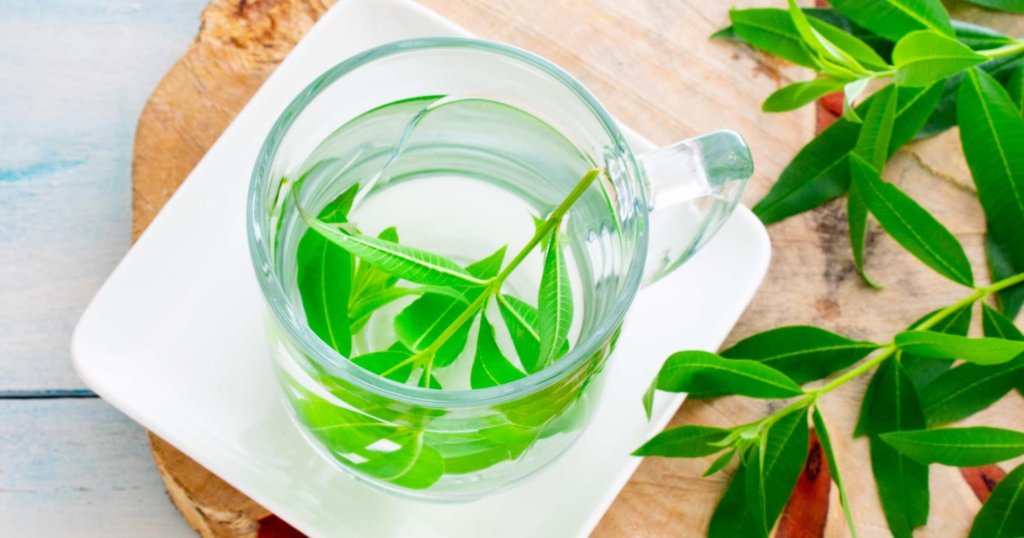
9. Lemon Verbena Oil
I use this oil in vinaigrette, and I especially love it drizzled over avocado toast in the morning.
Ingredients:
- 1 cup fresh lemon verbena leaves
- 1/2 cup grapeseed oil
Instructions:
- In a blender or food processor, combine the lemon verbena and oil and blend for 2 minutes.
- Pour the oil into a jar and steep for 1 hour.
- Strain through a fine sieve. Store in the refrigerator.
10. Lemon Verbena Whipped Cream
Ingredients:
- 1/4 cup white sugar
- 1 cup packed fresh lemon verbena sprigs
- 1 1/2 cups heavy whipping cream
- 1 teaspoon pure vanilla extract
Instructions:
- Combine sugar, leaves, and 1/4 cup of water in a saucepan over medium-low heat.
- Bring to a simmer, stirring until sugar is fully dissolved. Allow to cool completely.
- Strain syrup into a large bowl or the bowl of a stand mixer. Add cream and vanilla. Whip until soft peaks form.
Use lemon verbena whipped cream as a cake frosting or over fresh fruit for a light summer dessert.
11. Lemon Verbena Pesto
Ingredients:
- 1 cup fresh lemon verbena leaves
- 2 garlic cloves
- 1/4 grated parmesan cheese
- 1/4 cup pine nuts or walnuts
- 1/2 cup extra virgin olive oil
Instructions:
- Combine lemon verbena, garlic, cheese, and nuts in a food processor and pulse to combine.
- With the processor running, slowly drizzle in the olive oil until emulsified.
Toss with grilled vegetables, meats, or as a spread for crostini.
12. Lemon Verbena Vinegar
Ingredients:
- 2 cups champagne vinegar
- 1 cup loosely packed lemon verbena leaves
- 1 teaspoon lemon zest
Instructions:
- Place lemon verbena in a jar and bruise with a spoon.
- Pour in vinegar and lemon zest.
- Close jar and steep for a week out of direct sunlight.
- Strain into a decorative bottle, and add a sprig of lemon verbena and a lemon peel.
13. Lemon Verbena Tea
Add dried lemon verbena leaves to a tea bag or tea strainer and steep in hot water. Combine with other dried teas and herbs for a more complex flavor.
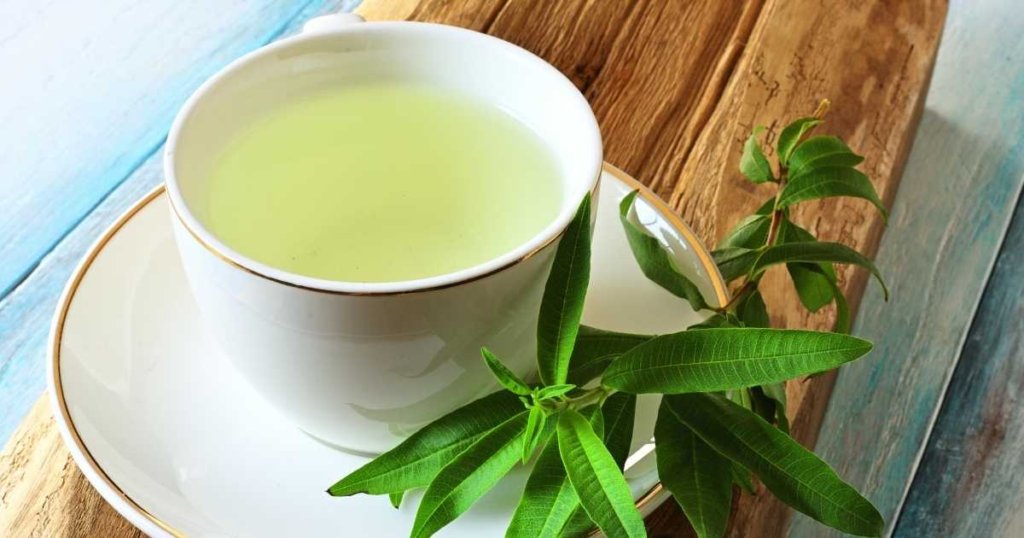
14. Relaxing Lemon Verbena Spa Bath
Ingredients:
- 1 cup whole dried lemon verbena leaves
- 1/2 cup dried lavender buds
- 1/2 cup dried whole chamomile blossoms
- 1/4 dried orange peel
Instructions:
- Place the dried herbs into a bowl and mix to create the blend. Store blend in a glass jar.
- Add 1/4 cup of the herb bath blend into a small muslin bag.
- Simmer bag in a pot of one quart water on the stove for 10 minutes until a fragrant “tea” is formed.
- Pour tea and bag into bath to create a relaxing spa experience.
15. Lemon Verbena Sachet
Add whole dried lemon verbena leaves to a small silk or cloth bag. Add additional dried botanicals such as lavender or rose, and tuck into drawers.
*Outdated scientific names include Aloysia citriodora and Lippia citriodora.)
- New to Gardening? Join Our Step-by-Step Beginner Gardening Class - April 24, 2025
- Why “Intensive” Gardening is Not Good - March 9, 2025
- How to Grow Bush Beans - March 1, 2025


